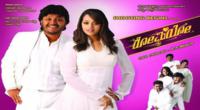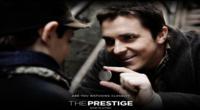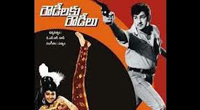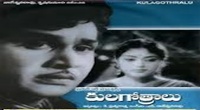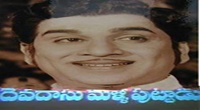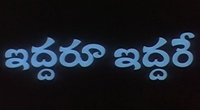The Wind Rises (Japanese: ???? Hepburn: Kaze Tachinu) is a 2013 Japanese animated historical drama film written and directed by Hayao Miyazaki, animated by Studio Ghibli for the Nippon Television Network, Dentsu, Hakuhodo DY Media Partners, Walt Disney Japan, Subaru, Mitsubishi, Toho and KDDI and distributed by Toho. It was released on 20 July 2013, in Japan, and was released in North America on 21 February 2014 under Disney's adult movie brand Touchstone Pictures.
| The Wind Rises | |
|---|---|
Japanese theatrical release poster | |
| Japanese | ???? |
| Hepburn | Kaze Tachinu |
| Literally | The Wind Rises |
| Directed by | Hayao Miyazaki |
| Produced by | Toshio Suzuki |
| Screenplay by | Hayao Miyazaki |
| Based on | The Wind Has Risen by Tatsuo Hori |
| Starring |
|
| Music by | Joe Hisaishi |
| Cinematography | Atsushi Okui |
| Edited by | Takeshi Seyama |
Production company | Studio Ghibli |
| Distributed by | Toho |
Release date |
|
Running time | 126 minutes |
| Country | Japan |
| Language | Japanese |
| Budget | US$30 million |
| Box office | US$136.5 million |
The Wind Rises is a fictionalized biopic of Jiro Horikoshi (1903–1982), designer of the Mitsubishi A5M fighter aircraft and its successor, the Mitsubishi A6M Zero, used by the Empire of Japan during World War II. The film is adapted from Miyazaki's manga of the same name, which was in turn loosely based on both the 1937 novel The Wind Has Risen by Tatsuo Hori and the life of Jiro Horikoshi. It was the final film directed by Miyazaki before his retirement in September 2013. However, in 2017, Miyazaki announced he had come out of retirement to produce How Do You Live?, which is expected to be released in 2020 or 2021.
The Wind Rises was the highest-grossing Japanese film in Japan in 2013. It won and was nominated for several awards, including nominations for the Academy Award for Best Animated Feature, the Golden Globe Award for Best Foreign Language Film, and the Japan Academy Prize for Animation of the Year.
Screenplay
In 1918, a young Jiro Horikoshi longs to become a pilot, but his nearsightedness prevents it. He reads about the famous Italian aircraft designer Giovanni Battista Caproni, and dreams about him that night. In the dream, Caproni tells him that he has never flown a plane in his life, and that building planes is better than flying them.
Five years later, Jiro is traveling by train to study aeronautical engineering at Tokyo Imperial University and meets a young girl, Naoko Satomi, traveling with her maid. When the Great Kanto Earthquake of 1923 hits, Naoko's maid's leg is broken and Jiro carries her to Naoko's family, leaving without giving his name.
In 1927, Jiro graduates with his friend Kiro Honjo and both are employed at aircraft manufacturer Mitsubishi and are assigned to design a fighter plane, the Falcon, for the Imperial Army. During tests, the Falcon breaks apart in mid-air and the Army rejects it. Dispirited about the seeming backwardness of Japanese technology, Jiro and Honjo are sent to Germany in 1929 to carry out technical research and obtain a production license for a Junkers G.38 aircraft. Jiro sees Hugo Junkers, argues with German guards and witnesses a minor Jew hunt. He dreams again of Caproni, who tells him that the world is better for the beauty of planes, even if humankind might put them to ugly purposes.
In the spring of 1932, Jiro is promoted to chief designer for a fighter plane competition sponsored by the Imperial Navy, but his design, the Mitsubishi 1MF10, fails testing in 1933 and is rejected. Disappointed, Jiro goes to a summer resort in Karuizawa to rest, where he meets Naoko again. They become engaged, but Naoko has tuberculosis and refuses to marry until she recovers. Castorp, a German visitor privately critical of the Nazi regime, assists in the romance before fleeing arrest by the Japanese secret police.
Wanted in connection with Castorp, Jiro hides at his supervisor's home while he works on a new navy project. Following a lung hemorrhage, Naoko recuperates in an alpine sanatorium but cannot bear being apart from Jiro, and returns to marry him. Jiro's sister Kayo, a doctor, warns Jiro that his marriage to Naoko will end badly as tuberculosis is incurable. Though Naoko's health deteriorates, she and Jiro enjoy their time together.
Jiro leaves for the test flight of his new prototype aircraft, the Mitsubishi A5M. Knowing that she will die soon, Naoko returns to the sanatorium, leaving letters for Jiro, her family, and friends. At the test site, Jiro is distracted from his success by a gust of wind, suggesting Naoko's death.
In the summer of 1945, Japan has lost World War II and has been devastated by air raids. Jiro again dreams of meeting Caproni, telling him he regrets his aircraft was used for war. A group of Zeros fly past and their pilots salute Jiro. Caproni comforts him, saying Jiro's dream of building beautiful aircraft was nonetheless realized. Naoko appears, exhorting her husband to live his life to the fullest.
| Character | Japanese | English |
|---|---|---|
| Jiro Horikoshi | Hideaki Anno | Joseph Gordon-Levitt |
| Nahoko Satomi | Miori Takimoto | Emily Blunt |
| Kiro Honjo | Hidetoshi Nishijima | John Krasinski |
| Kurokawa | Masahiko Nishimura | Martin Short |
| Castorp | Stephen Alpert | Werner Herzog |
| Satomi | Morio Kazama | William H. Macy |
| Jiro's mother | Keiko Takeshita | Edie Mirman |
| Kayo Horikoshi | Mirai Shida | Mae Whitman |
| Hattori | Jun Kunimura | Mandy Patinkin |
| Mrs. Kurokawa | Shinobu Otake | Jennifer Grey |
| Giovanni Battista Caproni | Nomura Mansai | Stanley Tucci |
| Kinu | Mae Whitman | |
| Sone | Elijah Wood | |
| Mitsubishi employee | Ronan Farrow | |
| Young Jiro | Kaichi Kaburagi | Zach Callison |
| Young Kayo | Maki Shinta | Eva Bella |
| Young Nahoko | Mayu Iino | Madeleine Rose Yen |
| Katayama | Darren Criss | |
| Flight Engineer | David Cowgill |
Development
"Le vent se lève!... Il faut tenter de vivre! ("The wind rises!... We must try to live!")" — Paul Valéry, "Le Cimetière Marin" (The Graveyard By The Sea).
The Wind Rises was directed by Hayao Miyazaki, whose previous films include My Neighbor Totoro, Princess Mononoke, and Spirited Away. It was the first film that Miyazaki solely directed since Ponyo in 2008.
Miyazaki began to conceive a story to illustrate the life of Jiro Horikoshi in 2008. He published the story as a manga series in the monthly magazine Model Graphix from April 2009 to January 2010, with the title borrowed from Tatsuo Hori’s novel The Wind Has Risen (????). The story in the manga follows the historical account of Horikoshi's aircraft development up to 1935 (the year of the Mitsubishi A5M maiden flight), and intertwines with fictional encounters with Caproni and Nahoko Satomi (?????). The scenes with Nahoko in the manga were adopted from the novel The Wind Has Risen, in which Tatsuo Hori wrote about his life experience with his fiancée, Ayako Yano (????), before she died from tuberculosis. The name Nahoko Satomi was borrowed from the female protagonist of another novel by Tatsuo Hori, Nahoko (???). Characters frequently discuss Thomas Mann's novel The Magic Mountain, and, in a letter to Nahoko, Jiro names his fleeing German friend "Mr. Castorp" after its protagonist. The character himself is a caricature of former Ghibli employee Stephen Alpert who returned to Japan to voice the character.
After the release of Ponyo, Miyazaki wanted his next film to be a sequel, Ponyo on the Cliff by the Sea II, but producer Toshio Suzuki proposed to adopt the manga The Wind Has Risen instead. At first, Miyazaki rejected the proposal because he created the manga as a hobby and considered its subjects not suitable for children, the traditional audience of the feature animations from Studio Ghibli. However, Miyazaki changed his objection after a staff member suggested that "children should be allowed to be exposed to subjects they are not familiar with".
Miyazaki was inspired to make the film after reading a quote from Horikoshi: "All I wanted to do was to make something beautiful".
Music
The film's score was composed and conducted by Joe Hisaishi, and performed by the Yomiuri Nippon Symphony Orchestra.
The film also includes singer-songwriter Yumi Matsutoya's 1973 song "Hik?ki-gumo" (?????). Matsutoya has collaborated with Studio Ghibli before in the production for Kiki's Delivery Service, which features her songs Rouge no Dengon (???????) and Yasashisa ni Tsutsumaretanara (???????????). Producer Suzuki recommended "Hik?ki-gumo" to Miyazaki in December 2012, feeling the lyrics resembled the story of The Wind Rises.
The Wind Rises soundtrack was released in Japan on 17 July 2013, by Tokuma Japan Communications.
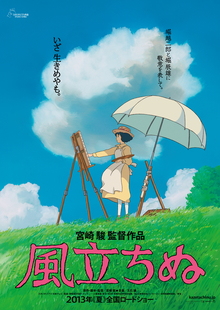 Story of movie The Wind Rises :
Story of movie The Wind Rises :



.jpg)

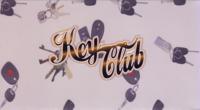
.jpg)
.jpg)
.jpg)


